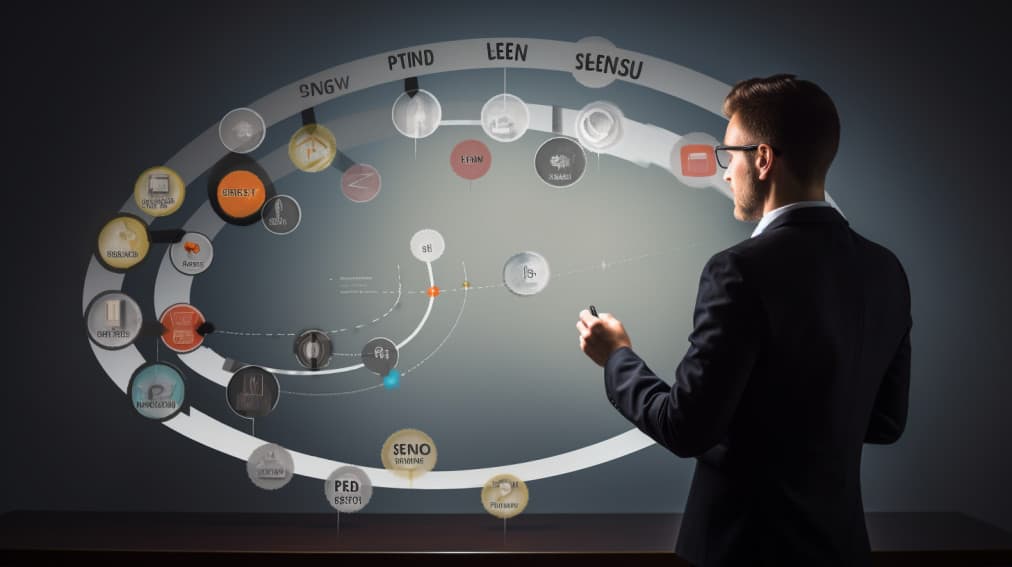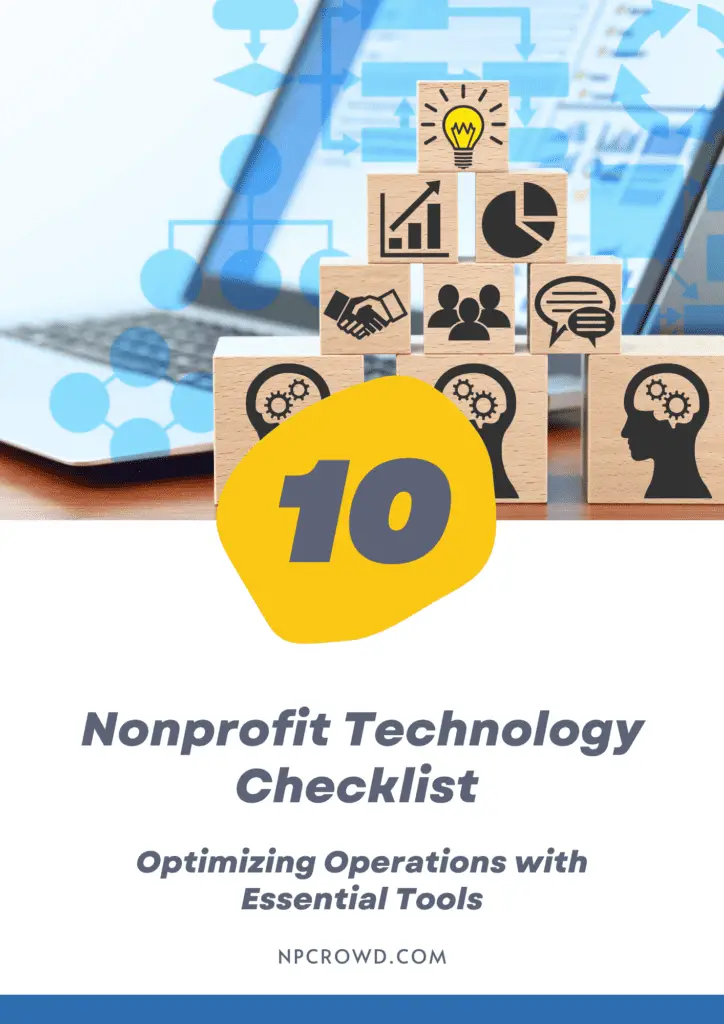Crush Your Nonprofit Project Management: More Than Just a Methodology
Disclaimer: This post may contain affiliate links. These links, if used and purchases made, we may earn a small commission. These affiliate programs do not impact the recommendations we make or the resources we refer you to. Our focus is on providing you the best resources for your nonprofit journey.
Hello there, intrepid nonprofit leader! I’m thrilled you’re joining us today to delve into the dynamic world of nonprofit project management. But wait – what’s that you’re thinking? “Project management sounds so… corporate?” Fear not, this isn’t your typical office-space jargon. Let’s embark on this enlightening journey together, shall we?What is Nonprofit Project Management?
Nonprofit project management is the process of initiating, planning, executing, monitoring, and closing projects within the context of a nonprofit organization. In other words, it’s like being the conductor of an orchestra, making sure all the different sections play together in harmony to create beautiful music – or in this case, meaningful impact.
Why is Nonprofit Project Management Important?
Imagine trying to make a complex dish without a recipe, or navigating a new city without a map. You could muddle through, but wouldn’t it be much easier if you had clear instructions or directions? Nonprofit project management is that guiding hand, helping you streamline your operations, improve team communication, and most importantly, maximize your impact.
Key Differences Between Nonprofit and For-Profit Project Management
You may wonder: “How different can it be from regular project management?” Well, while the core concepts remain the same, project management in nonprofits presents its own unique challenges and opportunities. Unlike for-profit project management, the focus here is on mission fulfillment rather than profit generation. Resources are often limited, stakeholders are more diverse, and success is measured not just in dollars, but in the difference made in people’s lives.
Planning Nonprofit Projects: Mapping Out Your Mission

Defining Project Goals and Objectives
Every journey begins with a destination in mind. The same holds for project management in nonprofit organizations. Start by defining clear, specific, and measurable goals. What change do you want to make? Whom do you want to help? How will you know you’ve succeeded?
Creating a Project Plan
Once you’ve identified your goals, the next step is to map out the path to achieving them. This includes setting timelines, assigning responsibilities, and defining deliverables. Remember, a plan is more than just a to-do list. It’s a roadmap guiding you toward your mission.
Identifying Project Stakeholders
Every project involves a host of players: staff, volunteers, donors, beneficiaries, the board, and more. It’s crucial to identify these stakeholders early on and understand their roles, responsibilities, and expectations. Remember, you’re not just managing a project; you’re managing relationships.
Developing a Project Budget
Funds are often tight in the nonprofit world, so budgeting is crucial. This involves estimating costs, securing funding, and tracking expenses. Remember, every dollar saved is another dollar towards your mission.
Executing Nonprofit Projects: Transforming Plans into Actions

Managing Project Teams
Whether it’s staff or volunteers, managing a project team involves keeping everyone motivated, on task, and in sync. This can be a juggling act, requiring clear communication, problem-solving, and plenty of empathy.
Monitoring Project Progress
Execution is where the rubber meets the road. Regularly track progress against your plan, measure performance, and adjust as needed. Regular updates not only keep everyone accountable but also allow for timely course corrections.
Managing Project Risks
Every project has its uncertainties. Risks, in nonprofit program management, could range from funding cuts to volunteer dropouts. Identifying potential risks and developing mitigation plans can help you steer clear of unexpected roadblocks.
Communicating Project Updates
Communication is key. Regular updates ensure that everyone is on the same page and moving in the same direction. Transparency also builds trust and engagement among stakeholders.
Evaluating Nonprofit Projects: Reflect, Learn, Improve

Measuring Project Success
In the world of nonprofit project management, success isn’t just about the bottom line; it’s about making a difference. Measure success in terms of impact: how many lives changed, communities improved, or environments protected. But also look at how effectively you managed resources, met timelines, and worked as a team.
Conducting Project Evaluations
Once the project is over, it’s time for some reflection. What worked well? What didn’t? What lessons can be learned for future projects? Honest evaluations can provide valuable insights and lead to continuous improvement.
Identifying Areas for Improvement
No project is perfect, and there’s always room for improvement. Identifying these areas isn’t about playing the blame game but finding opportunities to grow and get better at fulfilling your mission.
Incorporating Feedback into Future Projects
Remember, feedback is a gift. Use it to refine your project management process, improve team dynamics, and increase your impact. And don’t just gather feedback at the end of a project. Make it an ongoing practice to learn and improve continuously.
Tools and Resources for Nonprofit Project Management: Your Digital Companions

Project Management Software
Digital tools like Trello, Asana, or Monday can help you plan, execute, and monitor projects more efficiently. Some of them even offer special discounts for nonprofits.
Check out our list of project management tools.
Collaboration Tools
In today’s virtual world, tools like Slack, Google Workspace, or Microsoft Teams can improve team communication, collaboration, and document sharing.
Budgeting and Financial Management Tools
Apps like QuickBooks, FreshBooks, or Zoho Books can streamline your financial management, from budgeting to expense tracking to financial reporting.
Don’t forget to get your nonprofit discount for many of the tools we’ve discussed. We have a full list of discounts waiting for you here.
Training and Professional Development Resources
Continuous learning is key to mastering project management. Resources like PMI’s nonprofit project management courses or online platforms like Coursera and Udemy offer a wealth of knowledge to up your project management game.
Best Practices for Nonprofit Project Management: Tips to Take Your Projects to the Next Level

Establishing Clear Project Goals and Objectives
Remember, vague goals lead to vague results. Keep your goals SMART: Specific, Measurable, Achievable, Relevant, and Time-bound.
Communicating Effectively with Project Stakeholders
Whether it’s team meetings, email updates, or one-on-one check-ins, clear and consistent communication builds trust, improves collaboration, and ensures everyone is working towards the same goals.
Prioritizing Tasks and Managing Time Effectively
Not all tasks are created equal. Use prioritization techniques like the Eisenhower matrix to focus on what’s truly important and urgent.
Adapting to Changes in Project Scope or Timeline
Flexibility is key in nonprofit project management. Be prepared to adjust your plans as needed, whether due to funding changes, shifting needs, or unexpected opportunities.
Celebrating Project Successes and Learning from Failures
Celebrate every win, big or small, to boost morale and motivation. And when things go wrong, don’t fret. Learn from it and move on. Remember, every failure is a stepping stone to success.
The Unconventional Approach: Embracing the Chaos
Often, project management principles dictate a structured, orderly approach to executing projects. While this may work in most scenarios, the dynamic, often chaotic world of nonprofits can present unforeseen challenges that rigid structures may not be equipped to handle. This doesn’t mean we throw out the rulebook, but rather, we embrace the unpredictability and learn to adapt.
Instead of strictly adhering to the pre-defined project plans, adopting a more flexible, agile project management approach can help nonprofits thrive amidst uncertainty. This means being open to change, continuously assessing project progress, and adapting on the go. Remember, at the end of the day, the goal is to create impact. And if that means straying from the original plan or taking an unconventional path, so be it.
Furthermore, it’s crucial to recognize the emotional aspects of project management in nonprofits. Unlike their corporate counterparts, nonprofits are driven by passion and purpose. So, ensure to integrate elements of empathy, inspiration, and motivation into your project management approach. It’s not just about completing tasks; it’s about inspiring people to make a difference.
Conclusion: Mastering Nonprofit Project Management – An Ongoing Journey
And there you have it, your guide to nonprofit project management. We’ve explored the conventional structures and practices and also considered an unconventional, more fluid approach to navigating the nonprofit landscape. Remember, project management is not about rigidly following a set of rules, but about finding the most effective way to maximize impact and fulfill your mission. So go forth, apply these best practices, be open to adapting and evolving, and let’s create some extraordinary change together.
FAQs on Nonprofit Project Management
1. Do nonprofits need project managers?
Absolutely! Project managers can help nonprofits streamline operations, manage resources efficiently, and ensure projects align with their mission. But, depending on your size, this will likely not be a specific position in your nonprofit. If having work done by a consultant or form, have them fill the project manager role if it makes sense.
2. How is nonprofit project management different from for-profit project management?
The primary difference lies in the end goal: for nonprofits, it’s about fulfilling the mission and creating impact, while for-profits focus on profitability. Additionally, nonprofit project management often involves managing a diverse range of stakeholders and working with limited resources.
3. What skills do nonprofit project managers need?
Nonprofit project managers need a blend of hard and soft skills, including planning, risk management, budgeting, team management, communication, problem-solving, empathy, and flexibility.
4. What are some common challenges in nonprofit project management?
Some common challenges include limited resources, diverse stakeholder expectations, changing funding landscapes, and measuring project success in terms of social impact.
Additional Reading
For more insights and information, check out the following resources:
- Best Project Management Tools for Nonprofits
- Planning an Office Renovation Project for Beginners: An Introductory Guide
- https://nonprofitmegaphone.com/project-management-for-nonprofits-a-primer/
- https://www.springly.org/en-us/blog/agile-method-project-management-method-nonprofit/
- https://www.techsoup.org/business-and-technology-planning/business-and-technology-planning-project-management
Here’s to making a difference, one project at a time!







